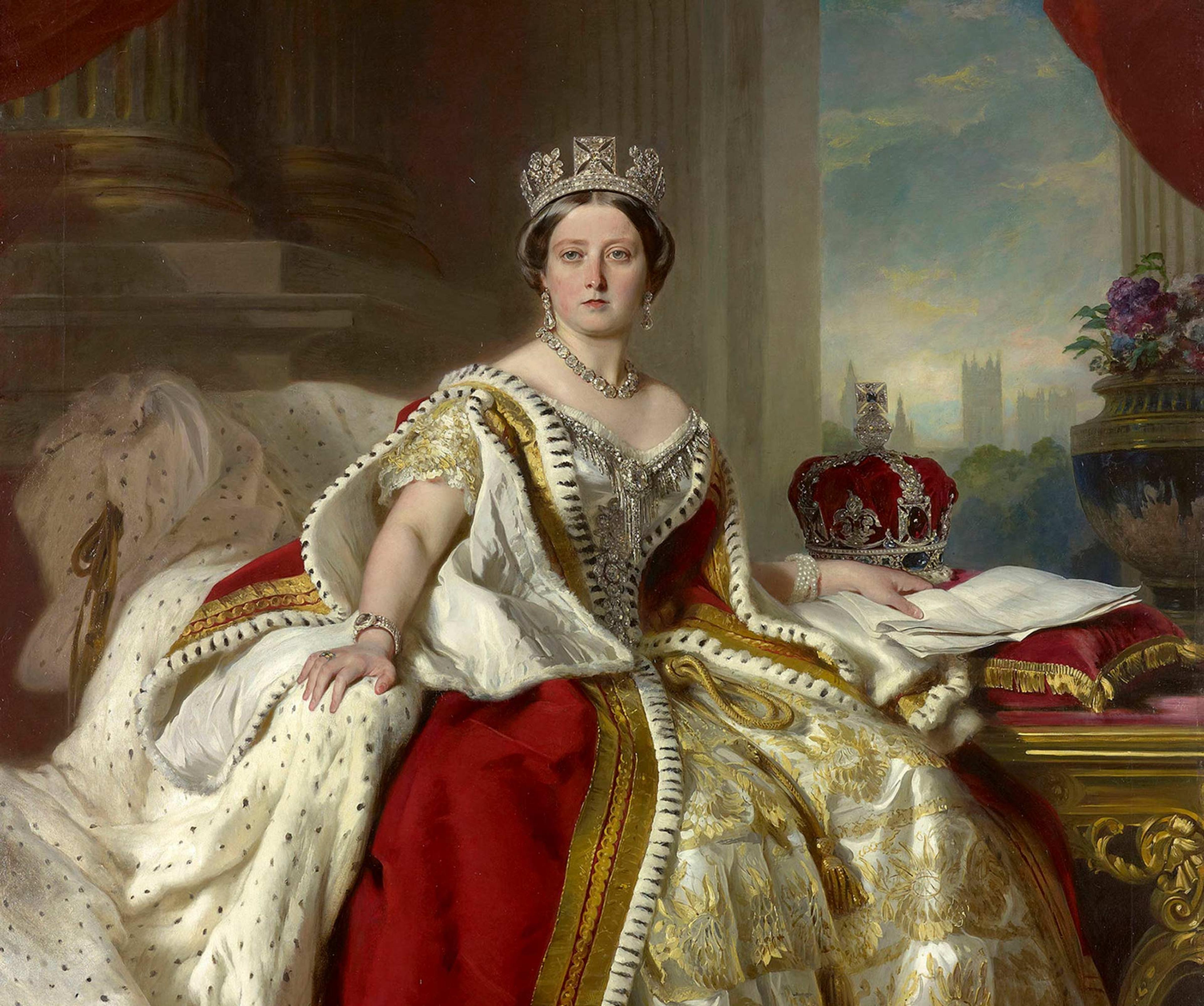Reverse-carved crystal—also called Essex crystal—is both sculpture and painting. A craftsperson carved an image in relief on the flat back of a domed cabochon, then painted the carving in fine detail. When viewed from the front, the result is a vivid, almost three-dimensional image suspended inside the crystal. It’s a lost art, requiring both technical precision and artistic skill.
This particular piece features the figures of Punch and Judy, characters that often leave American audiences bewildered. The tradition never quite made it across the Atlantic, but in Britain, Punch and Judy shows were a beloved form of street entertainment from the 17th century onward.
Rooted in the Italian commedia dell’arte, Punch is a distorted descendant of Pulcinella, known for his anarchic, chaotic behavior and his shrill voice. By the Victorian era, Punch and Judy had become a staple of British seaside culture—both comic and unsettling, often involving themes of domestic strife, authority, and rebellion.
thedetails
- Materials
10k gold mountings (tests), newer 14k gold ear wires, rock crystal, mother of pearl
- Age
c. 1880
- Condition
Very good - surface wear commensurate with age and use; ear wires are newer additions
- Size
1 1/8" length measured from the top of the ear wire, 7/8" diameter
Need more photos?
Send us an email to request photos of this piece on a model.

Aboutthe
VictorianEra
1837 — 1901
The Victorians were avid consumers and novelty-seekers, especially when it came to fashion, and numerous fads came and went throughout the 19th century. In jewelry, whatever fashion choices Queen V. made reverberated throughout the kingdom. The Romantic period reflected the queen’s legendary love for her husband, Albert.
Jewelry from this period featured joyful designs like flowers, hearts, and birds, all which often had symbolic meaning. The queen’s betrothal ring was made in the shape of a snake, which stood for love, fidelity, and eternity. The exuberant tone shifted after Prince Albert passed away in 1861, marking the beginning of the Grand Period. Black jewelry became de rigeur as the Queen and her subjects entered “mourning,” which at the time represented not just an emotional state, as we conceive of it today, but a specific manner of conduct and dress. She wore the color black for the remainder of her life, and we see lots of black onyx, enamel, jet, and gutta percha in the jewelry from this time. Finally, during the late Victorian period, which transitioned along with a rapidly changing world into the “Aesthetic Movement”, there was a return to organic and whimsical motifs: serpents, crescent moons, animals, and Japonaisserie designed for the more liberated “Gibson Girl”. During the second half of the 19th century, America entered the global jewelry market, with Tiffany and Co. leading the way. Lapidaries continued to perfect their techniques, and the old European cut emerged toward the end of the Victorian period. The discovery of rich diamond mines in South Africa made the colorless stones more accessible than ever before.
please note:Terms of Sale
Antiques can be returned unworn and in original condition within 10 days of delivery for an exchange or refund minus the cost of shipping. Once a piece has been altered, including ring re-sizing, it is FINAL SALE.




